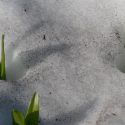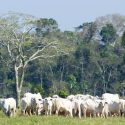Songs raise awareness about aquatic invasive species
A new initiative at UW–Madison is using music to raise public awareness about aquatic invasive species in the state.
“Research shows music can influence how we respond to messages, affecting memory, emotion, attitudes, and even behavior,” says Bret Shaw, assistant professor of life sciences communication at UW–Madison and environmental communication specialist for UW-Extension.
Shaw, who directed the project, recruited a group of award-winning Wisconsin songwriters to focus on preventing the spread of aquatic invasive species, which are threatening lakes in the state. “These songs were created to encourage behaviors that will protect the quality of our lakes and rivers for future generations,” says Shaw.
These songs communicate a number of messages, such as the importance of cleaning boats when moving them between bodies of water and not moving bait minnows from one lake to another if water has already been added from the first lake to the minnow bucket, which prevents VHS fish disease (viral hemorrhagic septicemia) from spreading from an infected to a noninfected lake. Natural resource professionals reviewed the lyrics of each song to assure scientific accuracy and consistency with current laws in Wisconsin.
The primary target audience for these songs are 35- to 55-year-old fishermen who are most likely to move between lakes, increasing the risk that aquatic invasive species can transfer from one body of water to another. The music was also designed to appeal to this demographic, with a focus on classic rock, country and folk.
The songs have received exposure on a number of radio stations throughout the state, and are also being distributed with help from the UW-Extension Lakes Program, the Wisconsin Department of Natural Resources and the Wisconsin Association of Lakes.
Subscribe to Wisconsin Ideas
Want more stories of the Wisconsin Idea in action? Sign-up for our monthly e-newsletter highlighting how Badgers are taking their education and research beyond the boundaries of the classroom to improve lives.



